 April 4, 2023
Seafood
April 4, 2023
Seafood  April 4, 2023
Seafood
April 4, 2023
Seafood Before you turn away, thinking I’m about to sell you on an overly complicated dish, stop. Trust me, this dish could not be easier to make. This bright and vibrant yuzu hamachi crudo is an absolute showstopper, yes, but it is also ridiculously easy to prepare. This buttery and rich fish combines a citrus yuzu dressing with a herbaceous sauce to create a composed dish that you will want to make again and again. If you can turn on your blender and put some fish on a plate, you can make this dish.
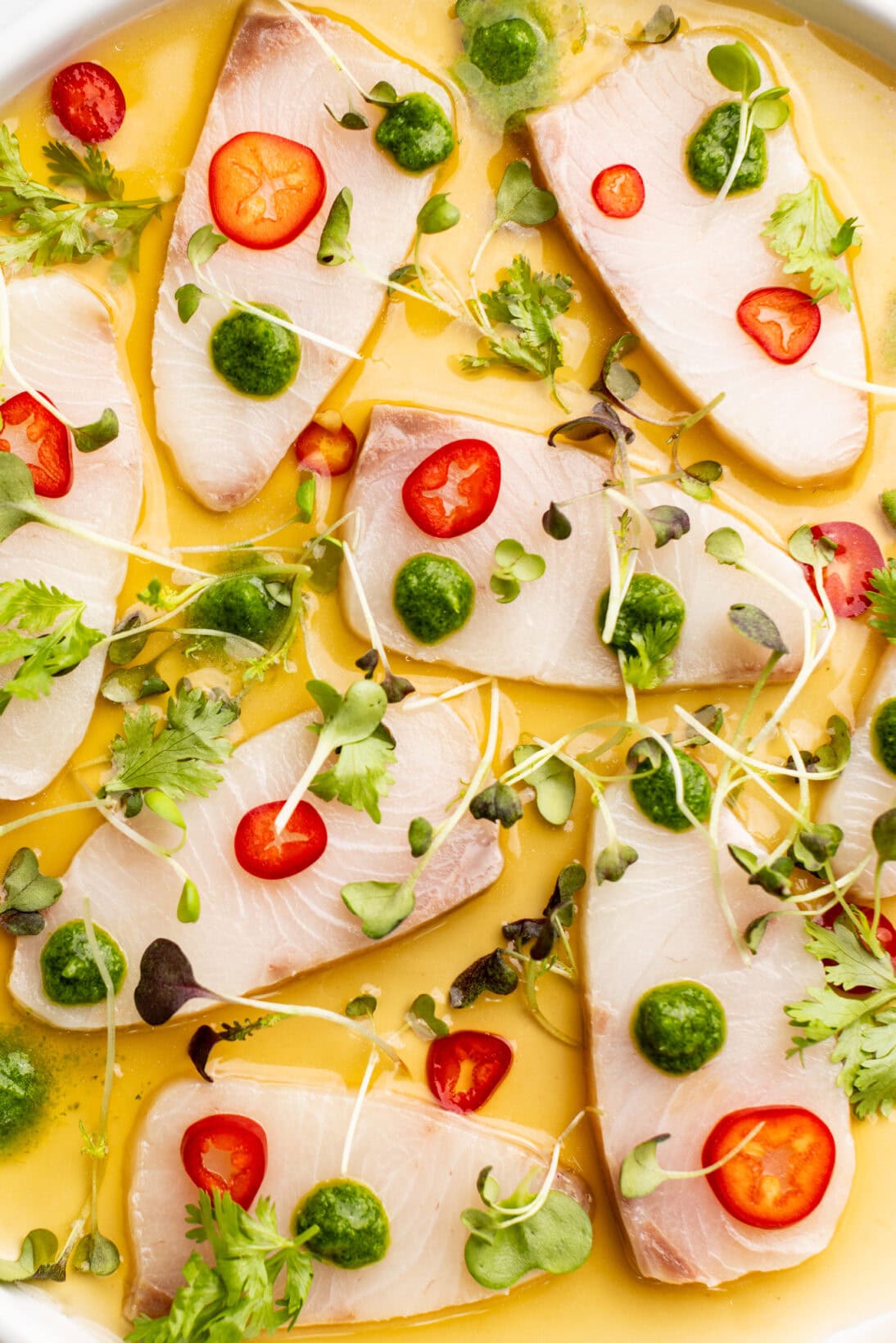
So, what is crudo, anyway? Crudo is an Italian word that means ‘raw’ and refers to a dish made with raw fish or seafood, dressed in a flavorful, citrus-forward vinaigrette or dressing, and garnished with herbs or delicate vegetables for subtle flavor. The dish is designed to showcase fresh flavors and honor the seafood being plated.
This particular crudo recipe combines the classic Italian dish with Japanese forward elements, using yellowtail tuna, also known as hamachi, a popular fish for sashimi. Additionally, flavors such as ponzu and yuzu are used in the dressing. Just to be clear, though, this is crudo, not sashimi. There are many other factors that go into sashimi, which I will save for another day.
What I love about crudo is that it feels like a really elevated dish, worthy of a date night in or even scaling up for a dinner party. The truth is, it couldn’t be easier to make. This hamachi crudo requires minimal work and will impress any crowd.
Also known as yellowtail or Japanese amberjack, hamachi is a popular fish used in Japanese cuisine, commonly found in sashimi or sushi. Hamachi has a firm yet delicate texture and flavor, offering a buttery and rich taste. Its high fat content and luxurious texture make it perfect for this citrus and chili-forward crudo.
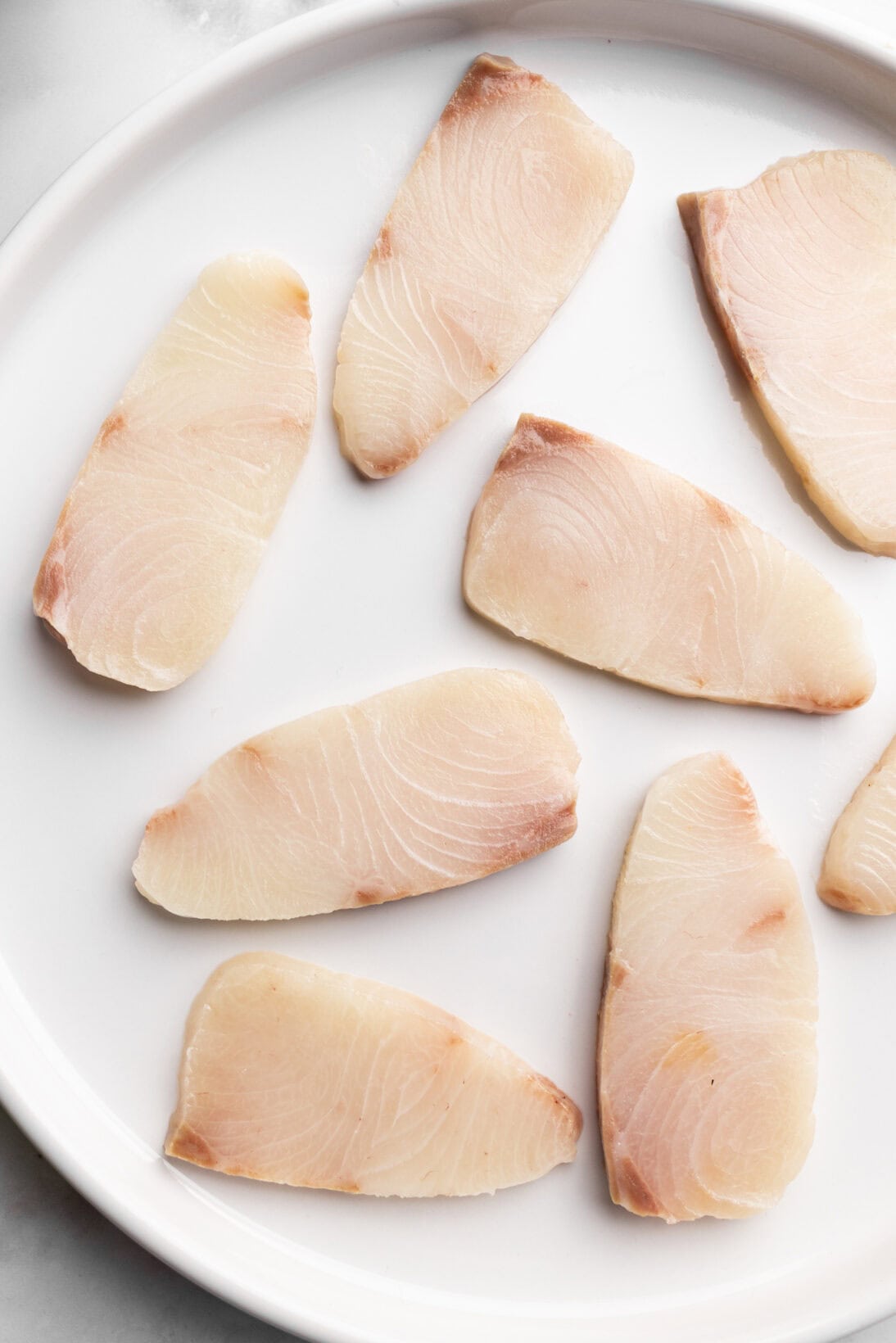
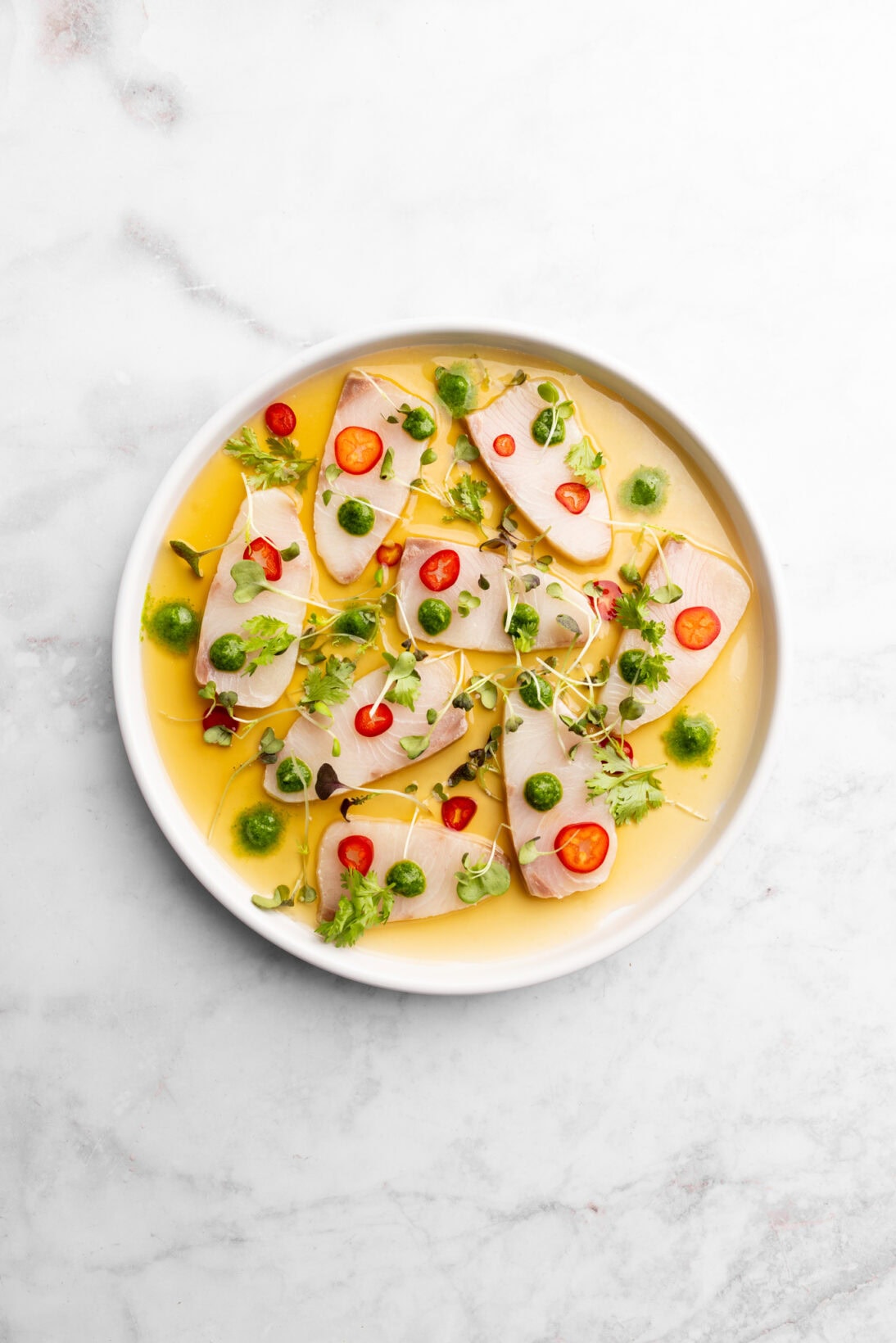
I understand that the biggest hurdle for this recipe is finding the right fish. The fish you choose absolutely needs to be of a certain quality to ensure it can be safely eaten raw. You’re looking for what’s often referred to as “sushi-grade,” though this isn’t an official label. Sushi-grade simply indicates high-quality fish that has been handled and treated properly for raw consumption. Factors such as how quickly the fish is processed, gutted, and frozen to kill bacteria and parasites are crucial.
Your fishmonger or a local small seafood counter are your best resources here. Since fish isn’t labeled as sushi-grade, it’s essential to have someone knowledgeable confirm whether the seafood you’ve chosen is safe to eat raw. Yellowtail, also known as hamachi, might be a bit challenging to find, but it’s worth asking or visiting a Japanese market if possible.
Additionally, don’t hesitate to consider frozen options. In fact, the FDA mandates that fish intended for raw consumption must be frozen below a certain temperature for at least 7 days to kill parasites. Frozen fish can be a good option and might be your only choice when seeking high-quality fish for this dish.
If you absolutely cannot find yellowtail—fresh or frozen—with the necessary quality assurance, here are a few substitutes that may be easier to locate.
Ahi Tuna – Sushi-grade ahi tuna steaks will definitely be easier to find. In fact, many mainstream supermarkets I visit often have it in the freezer section.
Scallops – This flavor combination would pair very nicely with buttery scallops. However, when purchasing, it’s important to ask for “dry” or “day-caught” scallops.
Yellowfin or Albacore – These are two other fish with a light, buttery flavor that complement the flavors of this crudo recipe well.
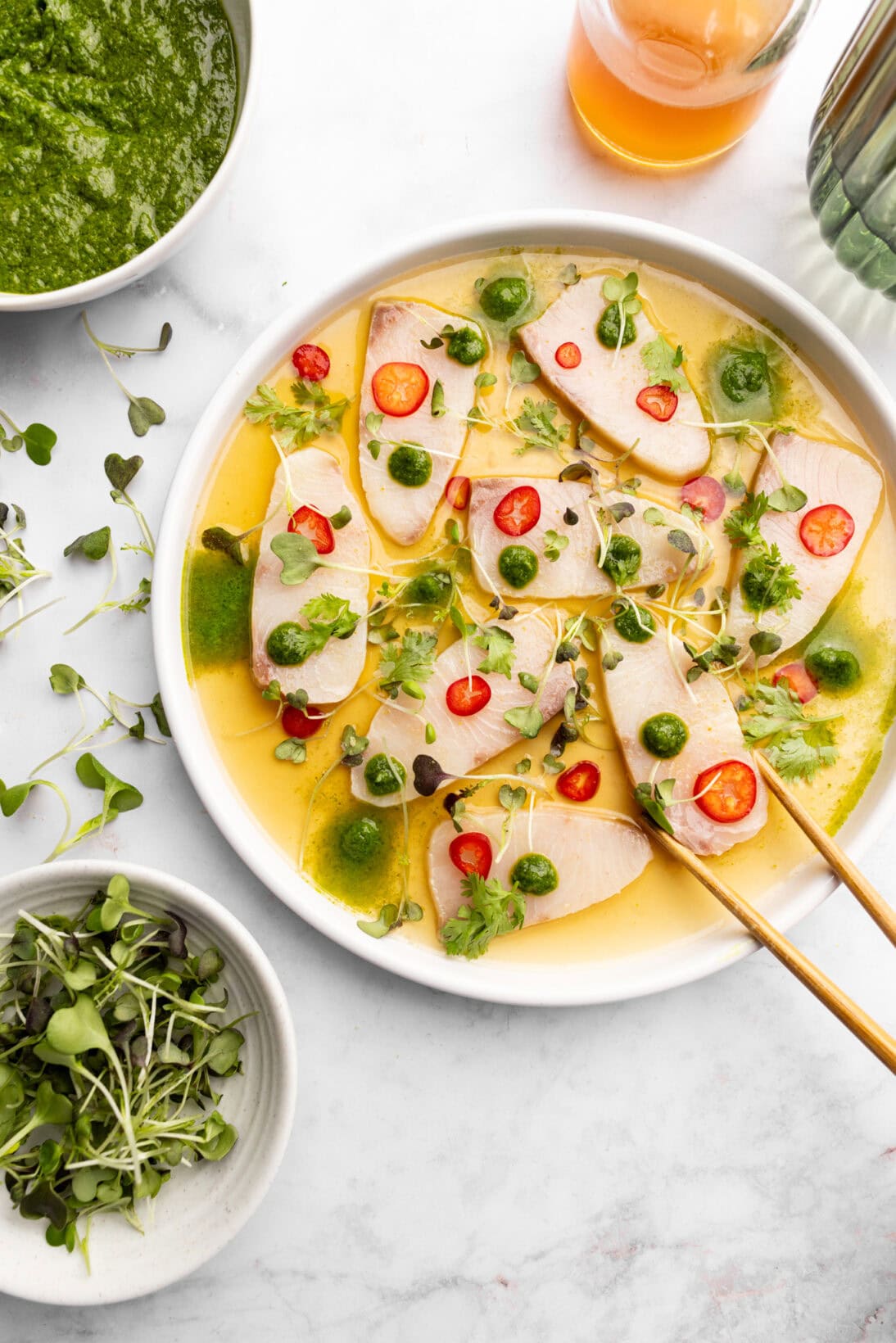
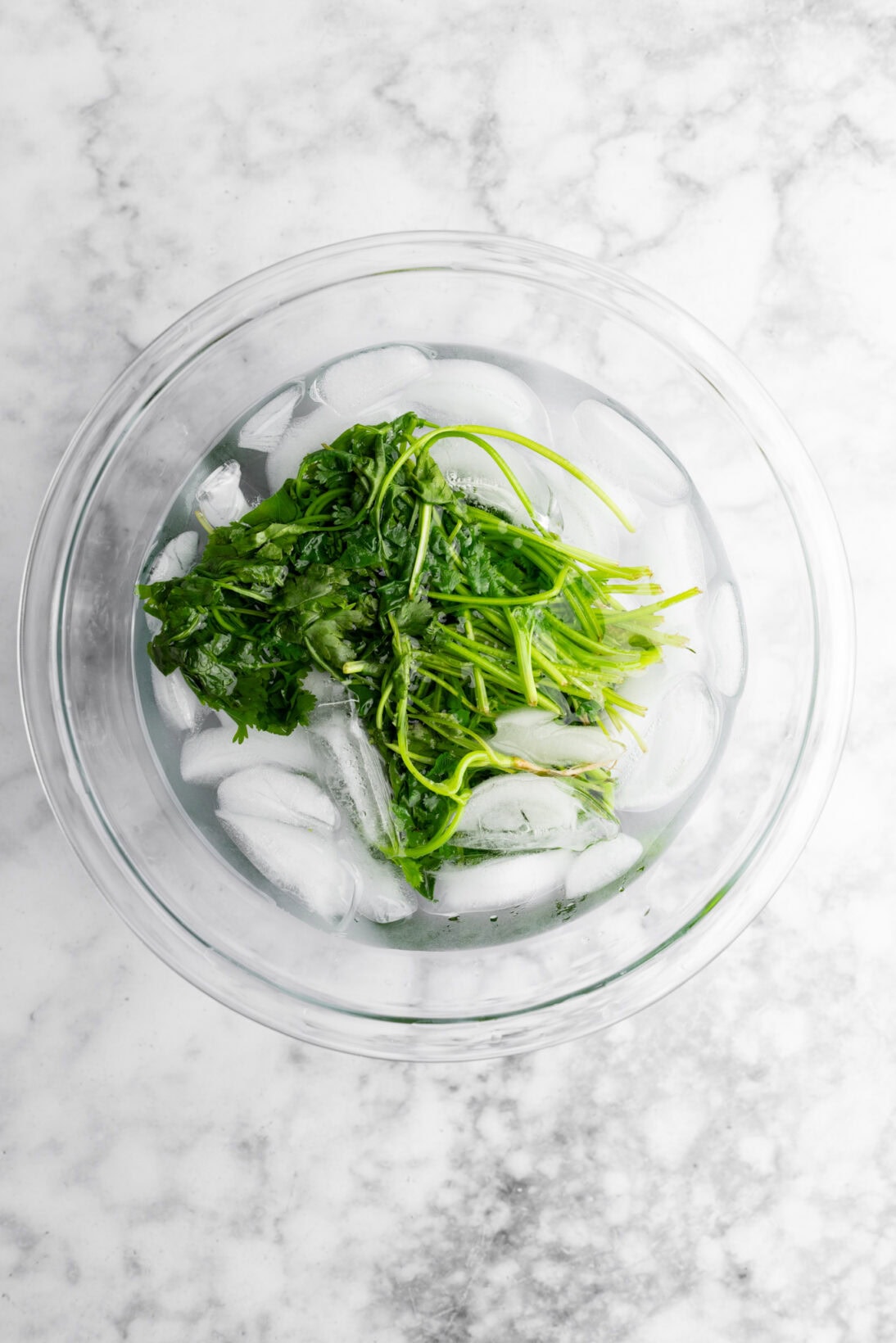
Make the Sauce – Bring a small pot of water to a boil. While the water is heating up, thoroughly prep and clean the cilantro, cutting off any roots. Once the water is boiling, submerge the cilantro for 10-15 seconds, then remove it and place it in a bowl of ice water. Blanching the cilantro will soften the stems and leaves while preserving its vibrant color. Once cooled, use a clean towel or paper towel to squeeze out all the water from the cilantro.
Prep the jalapeño by removing the stem, pith, and seeds. In a handheld blender, add the cilantro, jalapeño, a pinch of salt, and the oil. Process until smooth; this may take a minute or two.
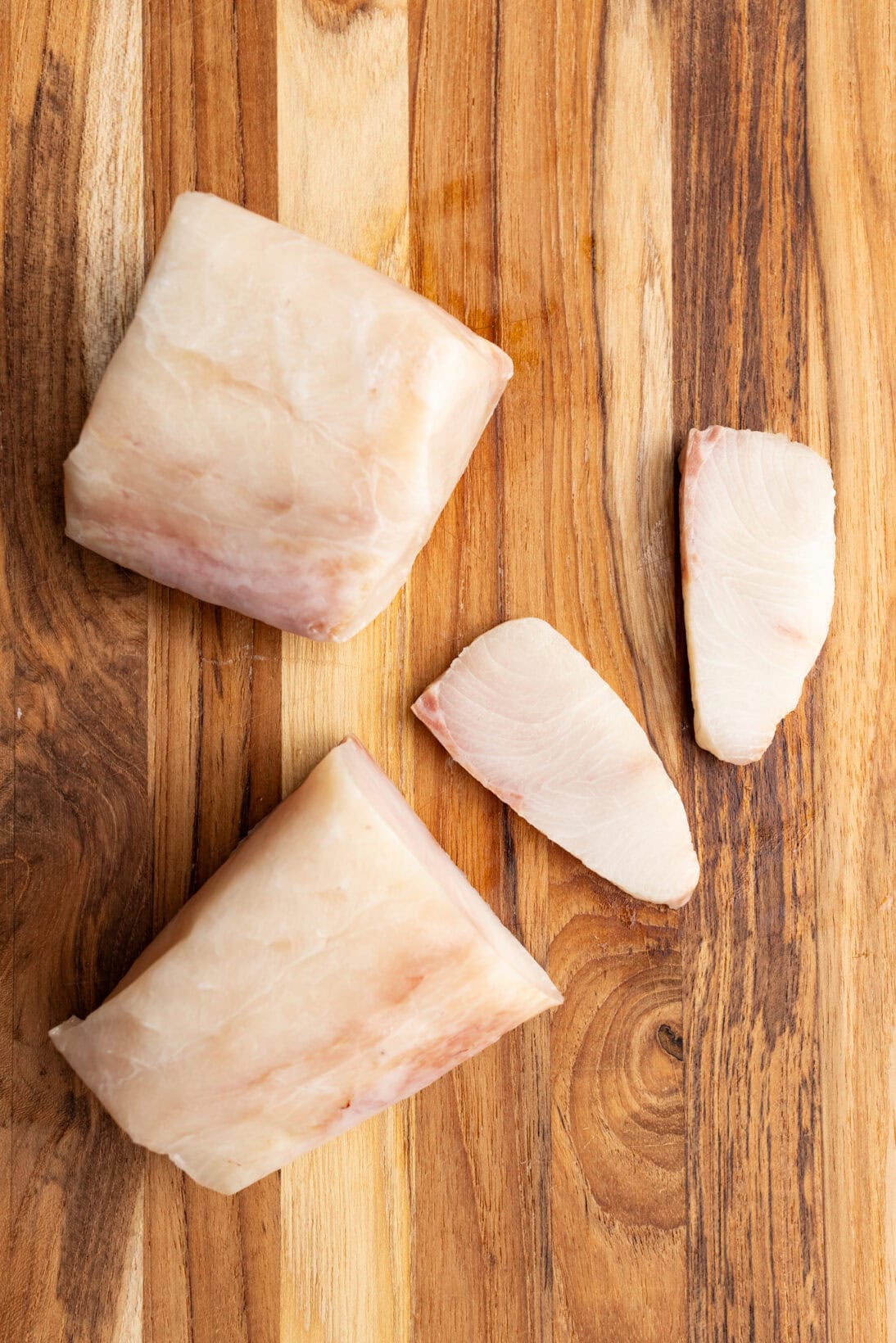
Prep + Cut the Yellowtail – If your yellowtail is fresh, place it in the freezer for 15-20 minutes to firm up. This will make cutting the fish significantly easier. If starting from frozen, defrost it in the fridge for 30 minutes before cutting.
Using a sharp knife—yes, it must be sharp—cut the fish into thin slices against the grain. Make sure you are cutting against the grain; if you cut with the grain, the fish may fall apart, making it difficult to eat.
Make the Sauce + Plate – In a bowl combine the yuzu juice, ponzu, and lemon juice.
Arrange the hamachi slices on a plate and top with sliced chilies. If you have a squeeze bottle, dollop some of the cilantro jalapeño purée on each piece of fish to ensure that each bite has some of the vibrant sauce. Additionally, place some dollops on the plate to mix with the sauce as you pour.
Pour the sauce onto the plate, then top with micro-greens and a generous amount of cilantro leaves. Sprinkle a bit of sea salt on each piece of fish. Serve immediately.
Can I use a regular blender or food processor to make the sauce?
I tried, but it doesn’t work. Because of the small amount, there isn’t enough for the blender to process it into a smooth sauce. A handheld blender is the best choice to get the desired consistency.
Can I prep Hamachi crudo in advance?
Both the jalapeño cilantro purée and the ponzu sauce can be made in advance for easy plating. However, I do not suggest cutting the fish or plating the entire dish in advance.
I can’t find yellowtail, is there an alternative?
See above passage for a list of substitutions.
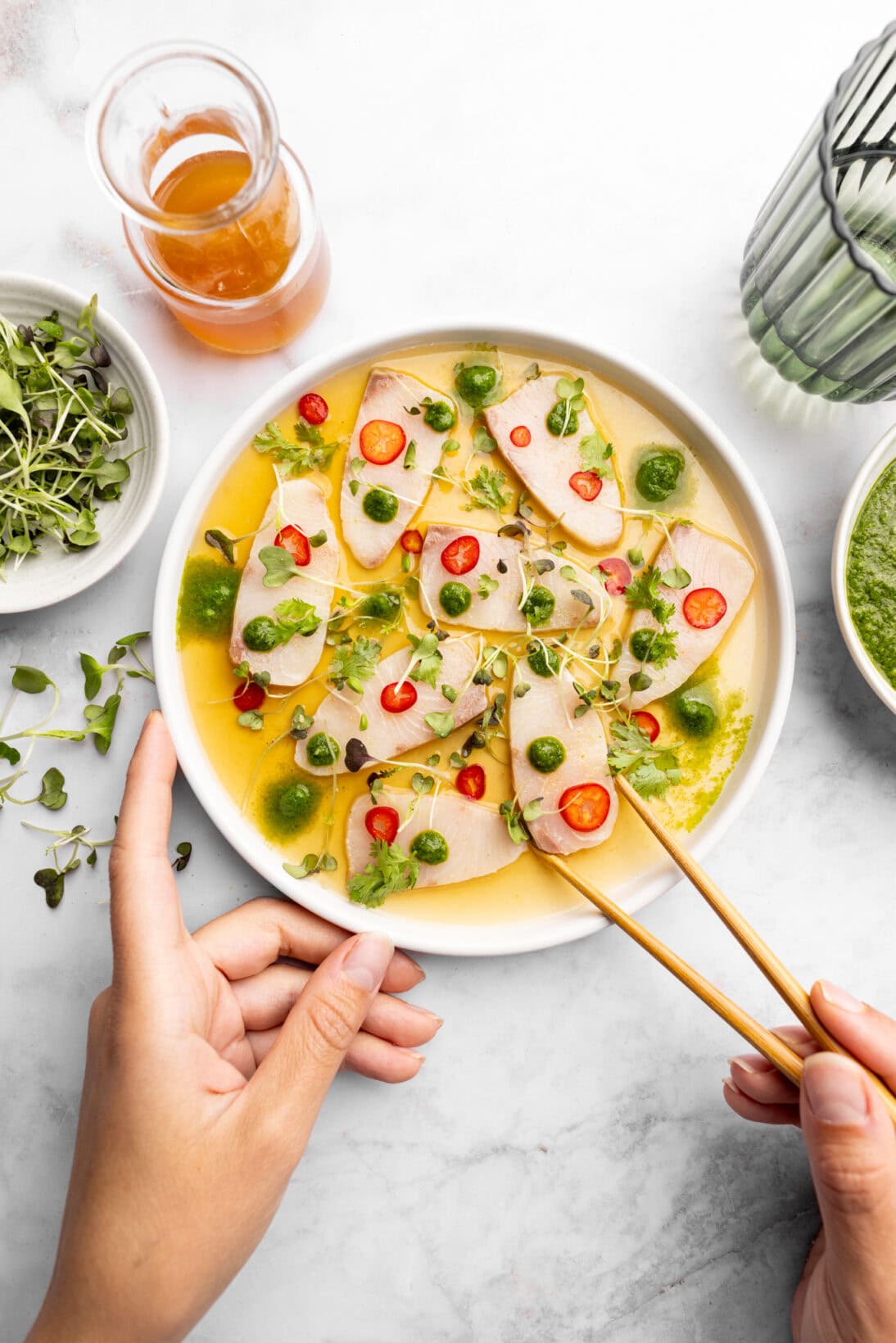
There is no storing hamachi crudo. For food safety reasons eat it immediately. The sauces can be made in advance and stored in the fridge for 1-2 days.
Love yellowtail? Then check out my Yellowtail Wonton Nachos!

Wonderfull recipe